Many people might jump if they hear a hiss and a rattle or see something slither by their feet. While snakes can be very intimidating animals, they are very interesting. Snakes have an incredibly long evolutionary history of extraordinary species; in fact, true snakes of the suborder Serpentes have existed for 112 million years! To put that into perspective, early humans arose only about six million years ago. Throughout those 112 million years and amongst even earlier ancestors, there were several snake species of particular interest. This article will explore five extinct snakes and learn just how diverse this long lineage is!
Where Do Snakes Fit in the Animal Kingdom?
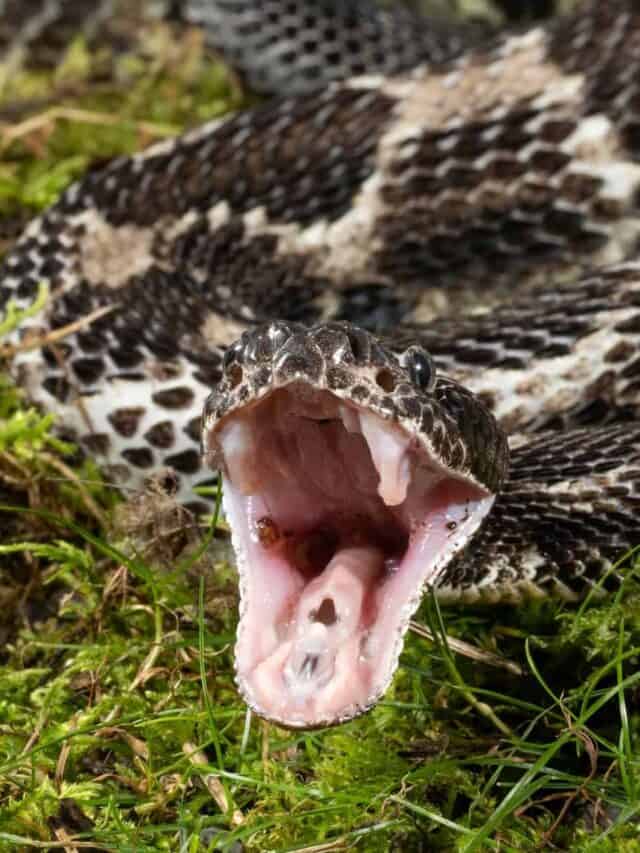
Snakes belong to the order Squamata with lizards, which comes from the Latin squatmatus meaning “having scales.”
©Joe McDonald/Shutterstock.com
All snakes belong to the class Reptilia, alongside lizards, crocodiles, turtles, and lizard-like animals called tuataras that are endemic to New Zealand. Snakes and lizards are distinguished from crocodiles, turtles, and tuataras because of their scales. Snakes and lizards belong to the order Squamata, which comes from the Latin squatmatus meaning “having scales.” Furthermore, snakes belong to the suborder Serpentes.
Interestingly, the classification of reptiles as a class and the classification of the orders within the class are debated today. Some biologists suggest that the bird class Aves should be dissolved and combined with reptiles. Recent DNA analysis has provided evidence of the close evolutionary relationship between birds and reptiles. For example, crocodiles are more closely related to birds than they are to all other living reptiles! To read more about the origin of birds, click here. To learn more about the relationship between crocodilian species and birds, head here.
What Is a Snake?
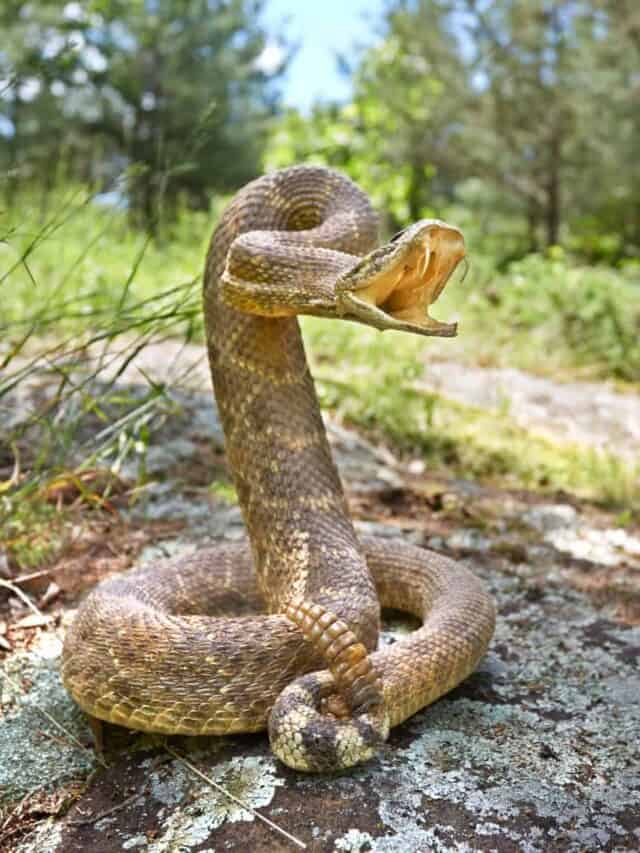
Snakes have many joints in their skull that allow them to eat prey much larger than their heads.
©iStock.com/Tee-roy
So, we know where snakes fit in the animal kingdom; let’s learn more about the snakes themselves. Snakes are scaly, legless, elongated reptiles. They are carnivorous, meaning they eat meat. In fact, snakes have many joints in their skull that allow them to eat prey much larger than their heads. Some species of snakes lay eggs, and some give birth to live young. Also, snakes undergo an interesting process called molting, where they regularly shed a layer of skin. Three thousand nine hundred species of snakes exist around the world on every continent except Antarctica and excluding New Zealand, Greenland, Iceland, and Ireland. Interestingly, one species called the European Viper even inhabits part of the Arctic Circle in northern Europe! To learn more about why there are no snakes in New Zealand, follow this link!
Here we will meet the oldest snake ever, a species of snake that was a transitional form descended from lizard ancestors, the largest viper ever, the largest snake ever, and a cool species of extinct blind snake.
1. Dawn Snake (Eophis underwoodi)

Stegosaurus was a thyreophoran dinosaur and one of the best-known dinosaurs of the Jurassic period.
©Daniel Eskridge/Shutterstock.com
The oldest species of extinct snake that exists in the fossil record is Eophis underwoodi, or colloquially the Dawn Snake. The Dawn Snake was on Earth during the Middle Jurassic epoch, which was during the Jurassic period. The Middle Jurassic is classified as the timeframe from about 174 million to 163 million years ago. This species is so old that it survived the asteroid impact that caused the extinction of dinosaurs!
The Eophis underwoodi species inhabited modern-day England, but its distribution isn’t entirely understood due to available fossil data. The fossil evidence for which this species was described is a fragment of a lower jawbone found in an English quarry. It is hypothesized that the Dawn Snake retained small legs from its lizard ancestors, was scaly, and had a snake-like head.
To learn more about the oldest species of snake and early snake evolution, click here!
2. Eupodophis descouensi

existed approximately 92 million years ago during the Late Cretaceous epoch.
©Own work / Creative Commons – License
Eupodophis descouensi is an ancient species of marine snake that was an important transitional form between lizards and limbless snakes. As such, this snake still retained two hind limbs, but the limbs lacked phalange and metatarsal bones and were therefore useless. A trait that is retained from an ancestral species but does not retain its function is called a vestigial structure, like the human tailbone. This species existed approximately 92 million years ago during the Late Cretaceous epoch, much more recently than Eophis underwoodi, but still incredibly long ago!
Regarding the physiology of Eupodophis descouensi, many traits are similar to modern reptiles, but there are also several differences. In addition to the primitive hindlimbs, this marine species also had a paddle-like tail that assisted with swimming efficiency. Also, although they lacked metatarsals and phalanges in their hindlimbs, they did retain a femur, tibia, and fibula in each limb. The anatomy of their vestigial limb is actually quite similar to that of extant (living) species of lizards.
To learn more about Eupodophis anatomy, click here!
3. The People’s Snake (Laophis crotaloides)
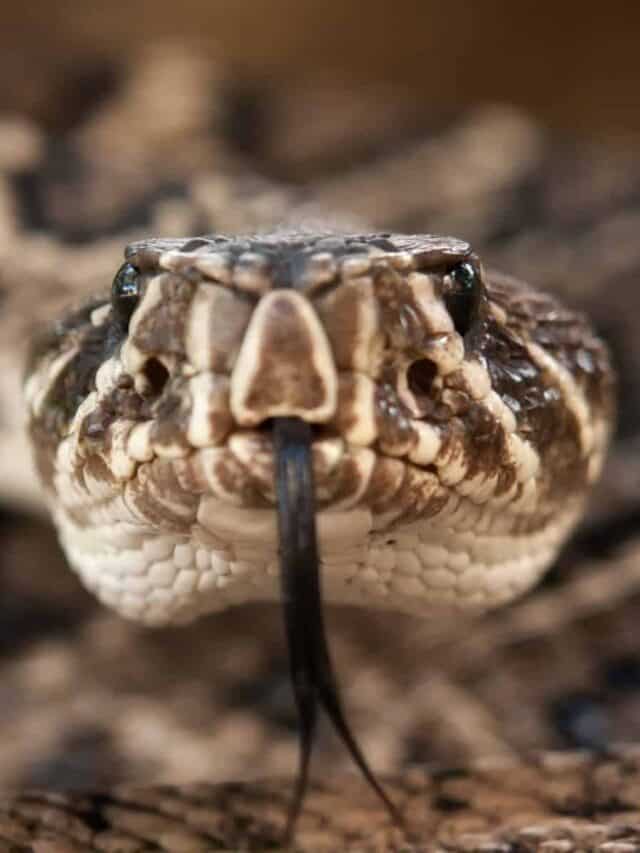
The modern Eastern Diamondback
rattlesnake
is the largest living viper.
©iStock.com/Wide-River-Rick
Laophis crotaloides is an extinct snake of the Viper family. The viper family, Viperidae, contains many species alive today, including pit vipers. Vipers commonly give birth to live young, whereas most other snakes lay eggs. The genus Laophis comes from Ancient Greek, meaning “People’s Snake.” The People’s Snake was found in northern Greece and reached a maximum length of 10-13 feet and a maximum weight of 57 pounds! This incredible weight makes Laophis crotaloides the largest viper yet to be discovered. The largest viper alive today is the Eastern Diamondback rattlesnake, which can reach a maximum weight of 35 pounds — a fraction of the size of the ancient People’s Snake!
The Laophis crotaloides was temporarily erased from history when its type specimen was lost. A type specimen, or holotype, is the first fossil discovered upon which a new species is based. The People’s Snake was first described in 1857, but when the initial fossil was lost, the species was essentially forgotten until a new fossil was discovered in 2014.
To learn more about the rediscovery of Laophis crotaloides, click here!
4. Titanoboa cerrejonensis

The Titanoboa could reach a length of 47 feet and a weight of 2,500 pounds!
©Michael Rosskothen/Shutterstock.com
Titanoboa cerrejonensis is the largest extinct snake and the largest snake that has ever lived! This massive snake lived between 60 million and 58 million years ago in what is now Colombia and was first described recently in 2009. The Titanoboa could reach a length of 47 feet and a weight of 2,500 pounds! That’s comparable to the weight of a black rhino ( 1,720-3,080 pounds)! The previous record holder for the largest snake ever was held by Gigantophis, approximately 35 feet long. The largest snake alive today is the green anaconda, which has a maximum length of about 30 feet and a weight of about 550 pounds — tiny compared to the ancient Titanoboa cerrejonensis!
The Titanoboa had unique anatomy aside from its incredible size as well. Interesting features of the snake’s skull suggest that it had a piscivorous (fish-based) diet. It had unique teeth and a palate that appear similar to adaptations observed in many modern snake species.
Interestingly, research on Titanoboa has led scientists to believe the climate at the equator during that time was hotter than previously estimated. The limit to an animal’s maximum size is its metabolic rate, which greatly influences thermoregulation (how an animal regulates its body temperature). An animal the size of Titanoboa would not survive in temperatures previously thought to exist at the time and would require a much higher temperature environment. This has caused scientists to reconsider their hypotheses given the new data.
Click here to read more about how Titanoboa has affected our understanding of equatorial climate!
5. Madatyphlops cariei
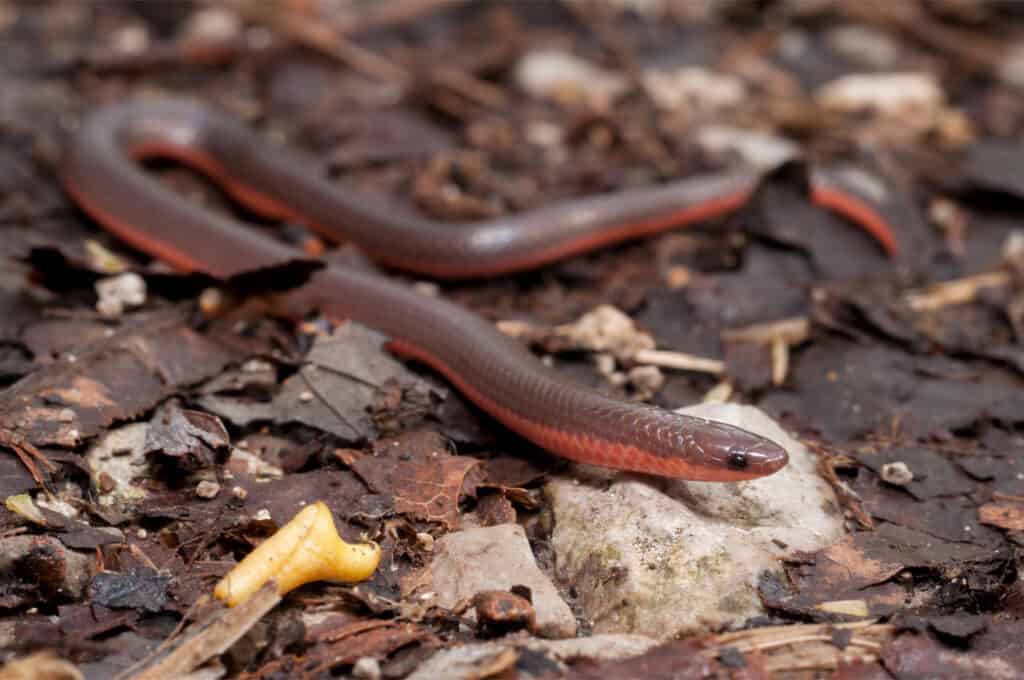
All species of Madatyphlops, like Hoffstetter’s Worm Snake, are blind.
©Mike Wilhelm/Shutterstock.com
Another cool species of extinct snake is Madatyphlops cariei, also known as Hoffstetter’s Worm Snake. This smaller snake was about 8 inches. So, if 71 of them were in a line snout to tail, they would be the same length as Titanoboa! Hoffstetter’s Worm Snake was only recently classified as extinct in 1994 by the IUCN list of endangered species. It lived only in an island nation in the Indian Ocean called Mauritius. There are 14 other related species in the genus Madatyphlops that are alive today, primarily living in Madagascar and less commonly on the Comoro Islands.
All species of Madatyphlops, like Hoffstetter’s Worm Snake, are blind. In fact, all 278 species in the family Typhlopidae are blind! Hoffstetter’s Worm Snake retained eye-like structures, but they had a negligible function and therefore were considered a vestigial structure, just like the hindlimbs of the Eupodophis species mentioned earlier. Also, unlike most snakes but like most blind snakes, Hoffstetter’s Worm Snake did not have a dislocatable lower jaw, which restricted its diet to organisms smaller than its oral aperture. This snake also had unique physiology evolved for burrowing and low light conditions living underground.
To read more about the blind snakes of the family Typhlopidae, click here!
Summary of 5 Fascinating Extinct Snakes
Here’s a recap of the five incredible extinct snake species that we took a look at.
| Number | Snake Species | Timeframe | Appearance |
|---|---|---|---|
| 1 | Dawn Snake (Eophis underwoodi) | Middle Jurassic epoch, 174 million to 163 million years ago | Small legs from its lizard ancestors, scaly, with a snake-like head |
| 2 | Eupodophis descouensi | Approximately 92 million years ago during the Late Cretaceous epoch | Two vestigial hind limbs, paddle-like tail |
| 3 | The People’s Snake (Laophis crotaloides) | First described in 1857; species was essentially forgotten until a new fossil was discovered in 2014 | Reached 10-13 feet long and a maximum weight of 57 pounds |
| 4 | Titanoboa cerrejonensis | Lived between 60 million and 58 million years ago; first described in 2009 | Grew to 47 feet long and a weight of 2,500 pounds |
| 5 | Madatyphlops cariei | Only classified as extinct in 1994 | 8 inches long with vestigial eye-like structures |
How Are Extant Species of Snakes Doing Today?

All snakes have a very complex and interesting history that scientists are still attempting to demystify in current research.
©iStock.com/Mark Kostich
Extant species, meaning those alive today, are prolific and distributed throughout the world. Snakes live in every habitat, from tropical rainforests in the Amazon to Arctic tundra in northern Europe. Although the IUCN Redlist classifies some species as “Least Concern,” some are currently endangered species, and many are categorized as “Data Deficient,” indicating that their conservation status cannot be determined based on existing data.
Many snake species are “living fossils,” indicating that they have existed in their current form for incredibly long periods with little evolutionary change. Other species are descendants of a long and diverse lineage. All snakes, however, have a very complex and interesting history that scientists are still attempting to demystify in current research.
Additional Information
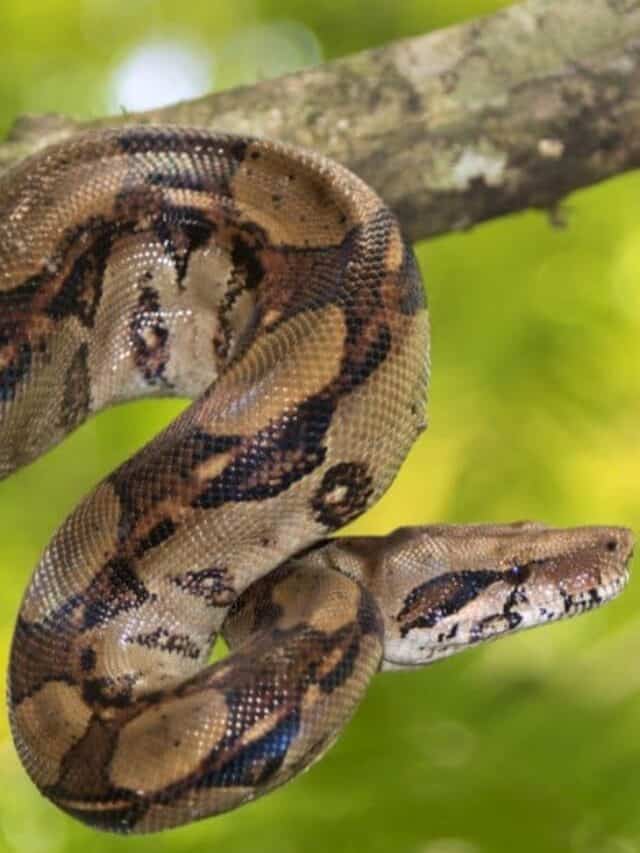
Boa constrictors are non-venomous snakes famous for their method of subduing prey: squeezing, or constricting, it to death.
©Natalia Kuzmina/Shutterstock.com
As we have learned, extinct snakes are incredibly cool animals with many unique and fascinating adaptations. Below are additional links to articles and papers related to snakes.
- To learn more generally about snakes, click here.
- To learn more about the ten most venomous snakes, or the ten largest venomous snakes, click those links.
- To learn more about the evolution of venomous fangs, click here.
- To learn about snake bite treatment, click here.
- To learn more about adaptations in tree-living snakes, click here.
- To learn more about the use of genomics and the fossil record to understand the origin of snakes, click here.
The photo featured at the top of this post is © Michael Rosskothen/Shutterstock.com
Discover the "Monster" Snake 5X Bigger than an Anaconda
Every day A-Z Animals sends out some of the most incredible facts in the world from our free newsletter. Want to discover the 10 most beautiful snakes in the world, a "snake island" where you're never more than 3 feet from danger, or a "monster" snake 5X larger than an anaconda? Then sign up right now and you'll start receiving our daily newsletter absolutely free.
Thank you for reading! Have some feedback for us? Contact the AZ Animals editorial team.







